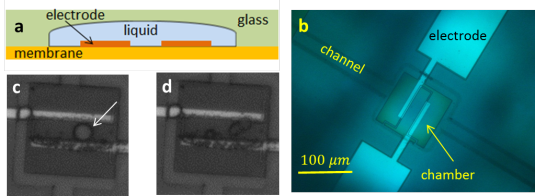Electrolytic gas production at catalytic surfaces with alternate current and the resulting chemical reactions




This project is completed by Dr. Vitaly Svetovoy at the University of Twente.
In heterogeneous catalysis, gas bubbles forming at the surface of a catalyst block its overall efficiency. Gaseous (nano)bubbles can form spontaneously, but they can also controllably generated by an external applied potential. The electrolytically generated bubbles can have dimensions from nanometers up to many micrometers. Nanobubbles with typical femtoliter volumes have been reported to be stable at the solid-liquid interface for days. On the other hand, electrolytically generated nano- and microbubbles grow with time and eventually detach as a result of buoyancy. Electrochemical control of the catalytic surface enables manipulation of the gas bubbles and therewith allows optimizing the efficiency of the catalytic surface.
In this project, we will investigate the gas evolution under electrolytic conditions, but choose for an alternate (AC) current: then both O2 and H2 will be produced, in stoichiometric mixture. Under certain conditions this knalgas inside the bubble will react, leading to an explosive reaction. It is unclear under what condition this reaction will happen and what triggers it.
The project is closely related to the project “Microscopic study of the initial stages of electrolytic gas production at catalytic surfaces” by Zandvliet et al: There a PhD student will look into electrolytically generated bubbles with DC. Many devices will jointly be used in the postdoc of this student will co-supervise the PhD student of that other project.
Project leader: Prof. Detlef Lohse


























